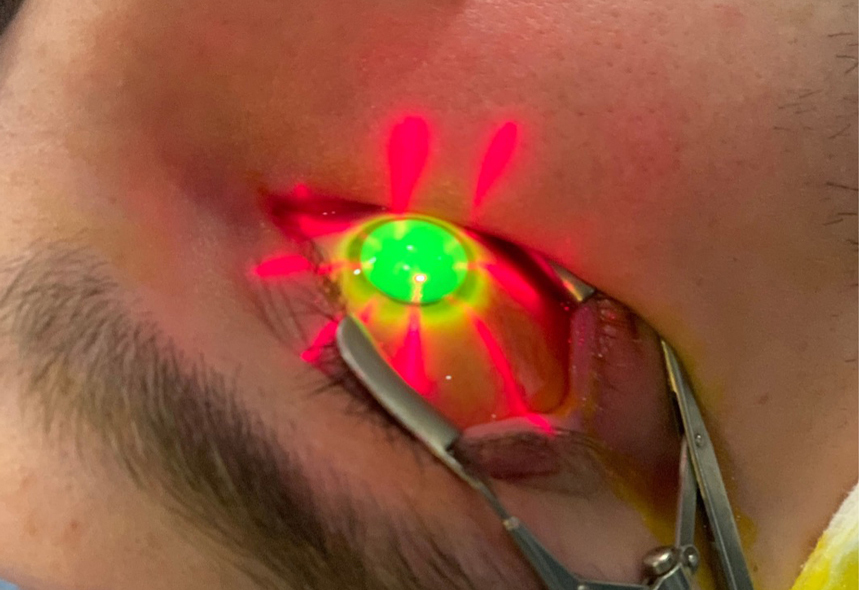 |
|
In those with CXL treatment failure, the mean time to a repeat CXL, DALK or PK procedure was 182 days. Photo: Lily Arendt, OD. Click image to enlarge. |
For keratoconus suspects and patients, asking pertinent questions about a history of eczema, asthma, allergy and eye rubbing should be part of the entering case history. A study presented at ARVO 2024 in Seattle last week reinforced the necessity of this step, as it determined that allergy and topic disease were associated with a higher treatment failure rate of corneal crosslinking (CXL).
Researchers from Wills Eye Hospital in Philadelphia conducted a retrospective claims-based analysis of patients from a 15-year period. They excluded patients who had enrollment beginning less than one year before initial CXL and patients who had undergone previous penetrating keratoplasty (PK) or deep anterior lamellar keratoplasty (DALK). The primary study outcome was time to treatment failure repeat CXL, PK or DALK identified by CPT-4 codes. The analysis involved 3,107 eyes from 2,356 patients with keratoconus who underwent CXL. The mean age was 31.8 years, and 67.5% of patients were male. The mean enrollment length was 4.6 years, and 1.2% of eyes (n=37) from 35 patients experienced treatment failure. Of this 1.2%, 31 of 37 (83.7%) underwent a repeat CXL, with the remainder undergoing PK or DALK. The mean time to repeat CXL, DALK or PK was 182 days.
The researchers noted that CXL failure was more likely to occur in patients with allergic or atopic disease (56.8% vs. 40.0%). There was no difference in failure rates by pediatric status (18.9% vs. 12.9%), sleep apnea (21.6% vs. 14.8%) or sex (40.5% vs. 33.2% female).
“Our study characterized rates of corneal CXL failure in patients with keratoconus using a large insurance claims database,” they emphasized in their ARVO abstract. “Keratoconus is a progressively ectatic corneal disease that leads to bilateral corneal stromal thinning and conical corneal bulging.”
Original abstract content ©2024 Association for Research in Vision and Ophthalmology.
Hwang B, Pecsok M, Cheng BT, Lambert SR. Rates of failure of corneal crosslinking for keratoconus in the United States. ARVO 2024 annual meeting. |

